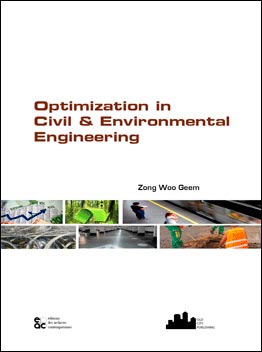
Optimization in Civil & Environmental Engineering
Today’s highly capitalized societies require maximum benefit with minimum cost. In order to find a low cost design in practice, experienced engineers have traditionally used trial-and-error methods based on their intuitive engineering sense. However, their approaches have not guaranteed optimal or near-optimal designs, which is why researchers have been interested in optimization methods.
Mathematically speaking, optimization refers to finding the best vector from a set of feasible alternative vectors. While Carl Friedrich Gauss first developed an optimization technique (steepest descent), George Dantzig first named the term linear programming, which is one of basic optimization techniques, in the 194 s. The optimization was one of core parts in operations research, which was originated from military field for providing a quantitative basis in decision-making of the war operations. However, the techniques have later grown to be applied to various industrial problems.
Civil engineering, which includes structural engineering, geotechnical engineering, water resources engineering, environmental engineering, transportation engineering, and construction management, can be an industrial sector which derives great benefit from the optimization because these techniques can save a lot of costs in public infrastructure construction and management that require enormous budget paid by tax payers.
Thus, this book intends to show a big picture how the optimization techniques are applied to various civil engineering problems: Chapter one deals with the optimization in construction and project management. The chapter describes famous construction management techniques such as critical path method (CPM) and program evaluation and review technique (PERT) with respect to optimization. It also shows the optimization approaches in capital budgeting, time-cost tradeoff, and construction site layout; Chapter two deals with the optimization in structural engineering. The chapter describes the optimization approaches in various structural design such as frame design and truss design; Chapter three deals with the optimization in water and environmental engineering. The chapter describes the optimization approaches in rainfall amount prediction, dam operation, flood amount prediction, water supply network design, groundwater structure identification, groundwater management, contaminant source identification, and ecological reserve planning; and Chapter four deals with the optimization in transportation engineering. The chapter describes the optimization approaches in highway ramp metering, vehicle routing, and traffic signal timing.
I express my sincere thanks to the chapter authors: Prof. Chung-Li





